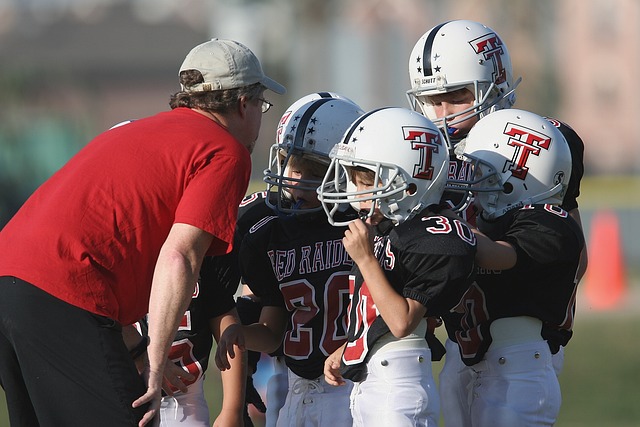Coaching focuses on facilitating goal achievement and skill development, often in specific areas. Teaching imparts knowledge across a broader range of subjects.
TL;DR Coaching Vs. Teaching
While coaching focuses on guiding individuals to discover their own solutions and unlock their potential, teaching involves imparting knowledge and skills directly to students.
Coaching is more personalized, interactive, and focused on empowering individuals to find their own answers. On the other hand, teaching follows a structured curriculum with a teacher leading the instruction.
What is Coaching?

Coaching is a personalized and goal-oriented process where a coach supports and guides individuals or teams to achieve specific objectives.
It involves fostering self-discovery, setting actionable goals, and providing feedback to enhance performance. Coaching is not prescriptive but rather empowers individuals to identify and implement solutions.
It is commonly utilized in professional and personal development contexts, addressing challenges, improving skills, and promoting continuous growth. Coaches use active listening, questioning, and mentoring techniques to facilitate the coachee’s journey toward realizing their potential. The coaching relationship is collaborative, emphasizing the coachee’s accountability and commitment to their aspirations.
What is Teaching?

Teaching is a structured and systematic process of imparting knowledge, skills, and understanding to learners in various subjects or disciplines. Conducted in formal settings like schools or universities, teaching involves educators delivering content, explaining concepts, and guiding students through learning experiences.
It encompasses lesson planning, classroom management, and assessment strategies to ensure effective knowledge transfer. Teaching aims not only to convey information but also to stimulate critical thinking, creativity, and a deep understanding of the subject matter.
Teachers play a central role in facilitating a positive and engaging learning environment, fostering intellectual development, and preparing students for future challenges in diverse academic and real-world contexts.
Coaching Vs. Teaching – Key differences
| Criteria | Coaching | Teaching |
|---|---|---|
| Focus | Goal achievement and skill development | Imparting knowledge and fostering understanding |
| Goal Setting | Coachee-driven, focusing on individual objectives | Curriculum-driven, covering a predefined set of topics |
| Approach | Personalized and collaborative | Structured and authoritative |
| Interaction Style | Dialogical, using questioning and active listening | Lectures, explanations, and guided discussions |
| Feedback | Emphasizes constructive feedback for improvement | Feedback often tied to assessments and grades |
| Skill Enhancement | Develops specific skills in targeted areas | Aims to impart a broad range of skills and knowledge |
| Accountability | Coachee takes active responsibility for actions and goals | Students are guided and assessed by the teacher |
| Learning Style | Tailored to individual learning preferences | Adapts to the needs of a diverse group of learners |
| Setting | Used in professional, personal, and sports contexts | Predominantly used in formal educational institutions |
| Role of the Facilitator | Coach facilitates self-discovery and growth | Teacher imparts knowledge and guides learning |
| Outcome Focus | Results-oriented, emphasizing individual growth and achievement | Achievement of learning objectives and educational outcomes |
Coaching Vs. Teaching – Which is more effective?
The effectiveness of coaching versus teaching depends on the context, goals, and individual preferences. Both approaches have unique strengths:
Coaching Effectiveness:
- Well-suited for personalized skill development and goal achievement.
- Fosters self-discovery and empowers individuals to take ownership of their growth.
- Effective in professional development and areas where personalized guidance is crucial.
Teaching Effectiveness:
- Effective in structured learning environments, covering a broad range of subjects.
- Ideal for imparting foundational knowledge, theories, and academic concepts.
- Commonly used in formal education settings to achieve standardized learning outcomes.
Ultimately, the choice between coaching and teaching depends on the specific objectives, the nature of the subject matter, and the preferred learning style of the individuals involved. In many cases, a combination of both approaches may be the most effective, leveraging the strengths of each to create a well-rounded learning experience.
Benefits of incorporating both coaching and teaching methods
Comprehensive Learning:
- Combining coaching and teaching methods offers a holistic learning experience, addressing both skill development and theoretical understanding.
Individualized Approach:
- Coaching allows for personalized guidance, while teaching provides a structured foundation, catering to diverse learning preferences.
Goal Alignment:
- Coaching helps align individual goals, while teaching ensures alignment with broader learning objectives and curriculum standards.
Skill Transfer:
- Coaching facilitates the practical application of skills learned through teaching, reinforcing knowledge retention and real-world relevance.
Motivation and Engagement:
- The coaching approach fosters motivation through personalized goals, while teaching provides engaging content and interactive learning experiences.
- Integrating coaching and teaching allows for adaptability, catering to different subjects, learners, and learning contexts.
Self-Directed Learning:
- Coaching encourages self-discovery and accountability, complementing the structured guidance provided by teaching methods.
Enhanced Communication:
- Coaching emphasizes effective communication skills, enhancing the overall ability to convey and understand information taught in the learning process.
Lifelong Learning Skills:
- The combination of coaching and teaching instills not only subject-specific knowledge but also critical thinking, problem-solving, and continuous learning skills.
Personal and Academic Growth:
- Students and learners benefit from both personal and academic growth, as coaching supports individual development, while teaching provides a strong educational foundation.
By integrating both coaching and teaching methods, educators and mentors can create a dynamic learning environment that addresses various aspects of knowledge acquisition, skill development, and personal growth.
How to determine which approach is best for you
Determining whether coaching or teaching is best for you involves considering your goals, preferences, and the nature of the subject or skills you want to acquire. Here’s a guide to help you decide:
Consider Your Goals:
- Skill Development: If your primary goal is to acquire specific skills or achieve targeted objectives, coaching may be more effective.
- Broad Knowledge: If you seek a comprehensive understanding of a subject or discipline, teaching may be the preferred approach.
Reflect on Your Learning Style:
- Self-Direction: If you prefer self-directed learning and discovering solutions independently, coaching might align better with your learning style.
- Structured Learning: If you thrive in a structured environment with organized lessons and curriculum, teaching may be more suitable.
Assess the Subject or Area of Focus:
- Practical Application: For practical, hands-on skills, coaching can provide real-world application and experiential learning.
- Theoretical Understanding: If a theoretical foundation is crucial, teaching may be more effective for grasping concepts and academic knowledge.
Consider Your Personality:
- Goal-Driven: If you are goal-oriented, motivated by personal development, and enjoy a tailored approach, coaching may be a good fit.
- Structured Learner: If you prefer clear objectives, curriculum, and a systematic learning approach, teaching may suit your preferences.
Evaluate Resources and Context:
- Availability of Mentors or Coaches: Assess whether you have access to qualified mentors or coaches for personalized guidance.
- Formal Education Setting: If you are in a formal educational setting, teaching methods are likely integral to the learning structure.
Experiment and Adapt:
- Trial and Error: Experiment with both coaching and teaching methods to see which resonates more with your learning style.
- Adaptability: Be open to adapting your approach based on the subject matter, learning context, and your evolving preferences.
The best approach often involves a combination of coaching and teaching elements tailored to your unique learning journey. Embrace a flexible mindset, and don’t hesitate to explore both methods to maximize your learning experience.
Image Credits
Featured Image By – Keith Johnston from Pixabay
Image 1 By – Pixabay








